Corsair H105 Extreme Performance Liquid CPU Cooler Review
Corsair H105 Benchmarking
In the benchmarks that will be run, we used an Intel 4770k clocked at 3.5GHz with Turbo Boost and the low power state enabled. Turbo Boost allows the 4770k to hit up to 3.9GHz. Many of the previous tests we chose not to overclock beyond the turbo frequency in order to show you what your average user would see. Starting with this cooler, the 4770k will be overclocked to a 4.3GHz turbo boost at 1.270 volts, which is over the stock 1.193v. To push this particular 4770k stably to 4.4GHz required well over 1.4 volts, which the performance gains of a 100MHz increase was not worth that huge bump in voltage.
To record temperatures, we used Core Temp, logged the temperatures for 15 minutes or while each program was active, and averaged all 4 cores.
Benchmark wise, we will be using several synthetic and real-world benchmarks to perform normal, heavy, and extreme load. The benchmarks that I’m going to use today include: Prime95, x264, 3DMark 2013 (Firestrike test only), Metro Last Light, and Sleeping Dogs. Prime95 will peg all four cores and eight threads to 100%, which will help us to understand exactly how hot this CPU can get with each cooler.
Ambient temperature during all testing was 74 degrees Fahrenheit.
I have reviewed several other liquid CPU coolers in the past and you will find them in the charts below for comparison purposes. I was able to get test results while overclocked for the previous cooler that I reviewed, the Cooler Master Glacer 240L, and have included them here.
Idle
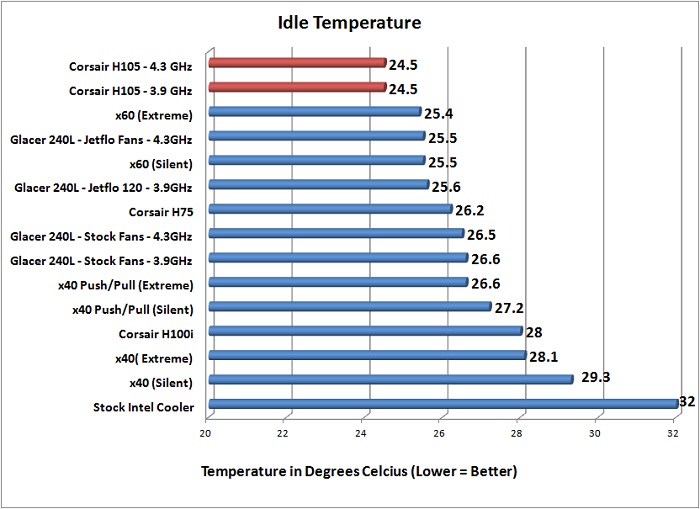
Prime95
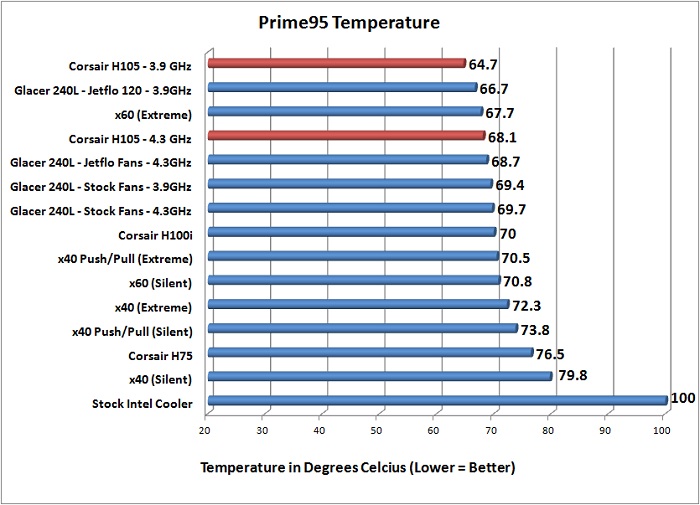
X264
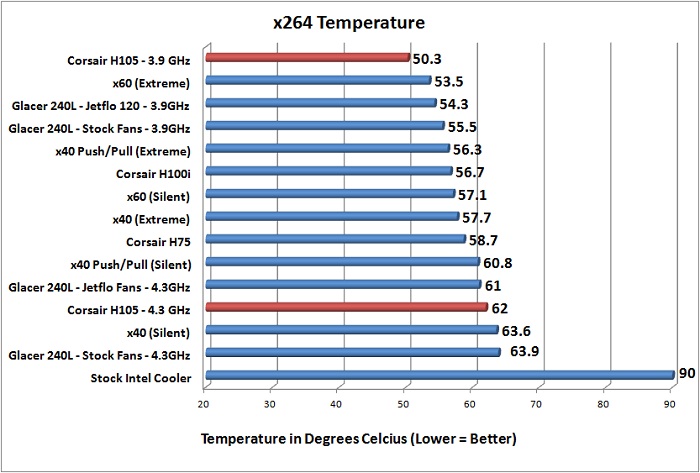
3D Mark 2013
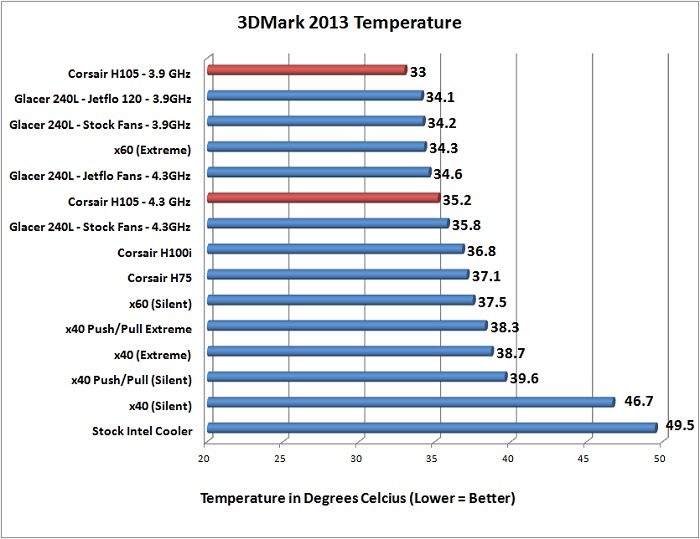
Metro Last Light
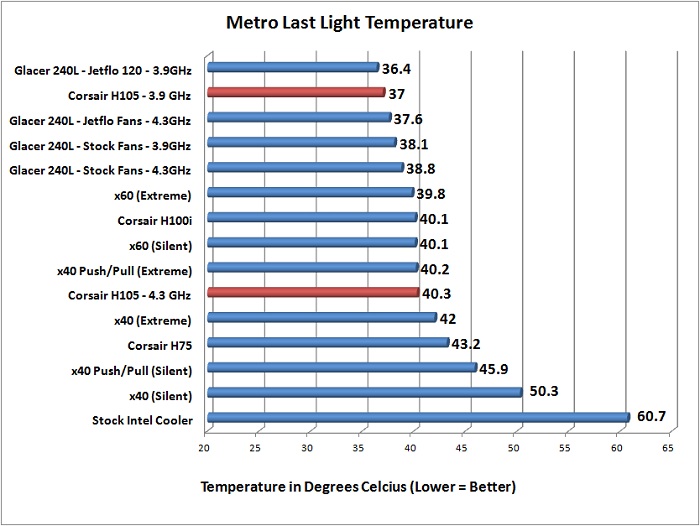
Sleeping Dogs
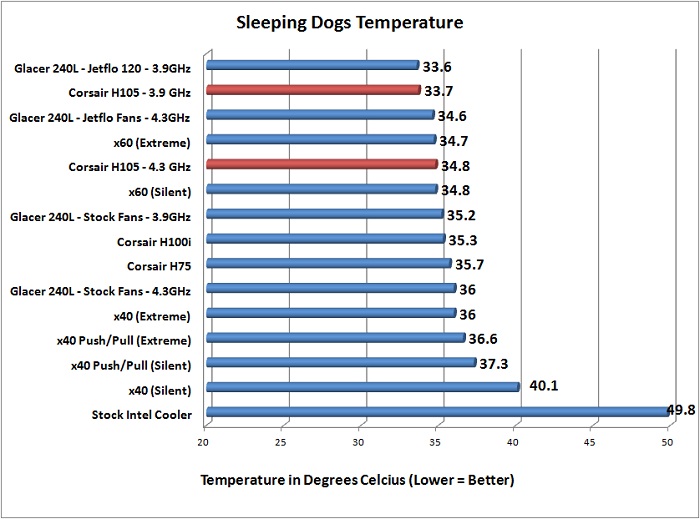
Overall Results: Corsair’s H105 took the crown in a number of scenarios at the stock frequency of 3.9GHz on our 4770k. Even if it was not number one at this speed, it found itself in a very close second. When it came to overclocking the 4770k to 4.3GHz, the H105 still pulled in cooler temperatures than many other coolers when the CPU was at 3.9GHz. The most impressive result here is the Prime95 test at 3.9GHz, coming in several degrees Celsius cooler than the next closest. Thinking this was a fluke, we ran the test twice more and came back with similar results each time, confirming the numbers were in fact true.
